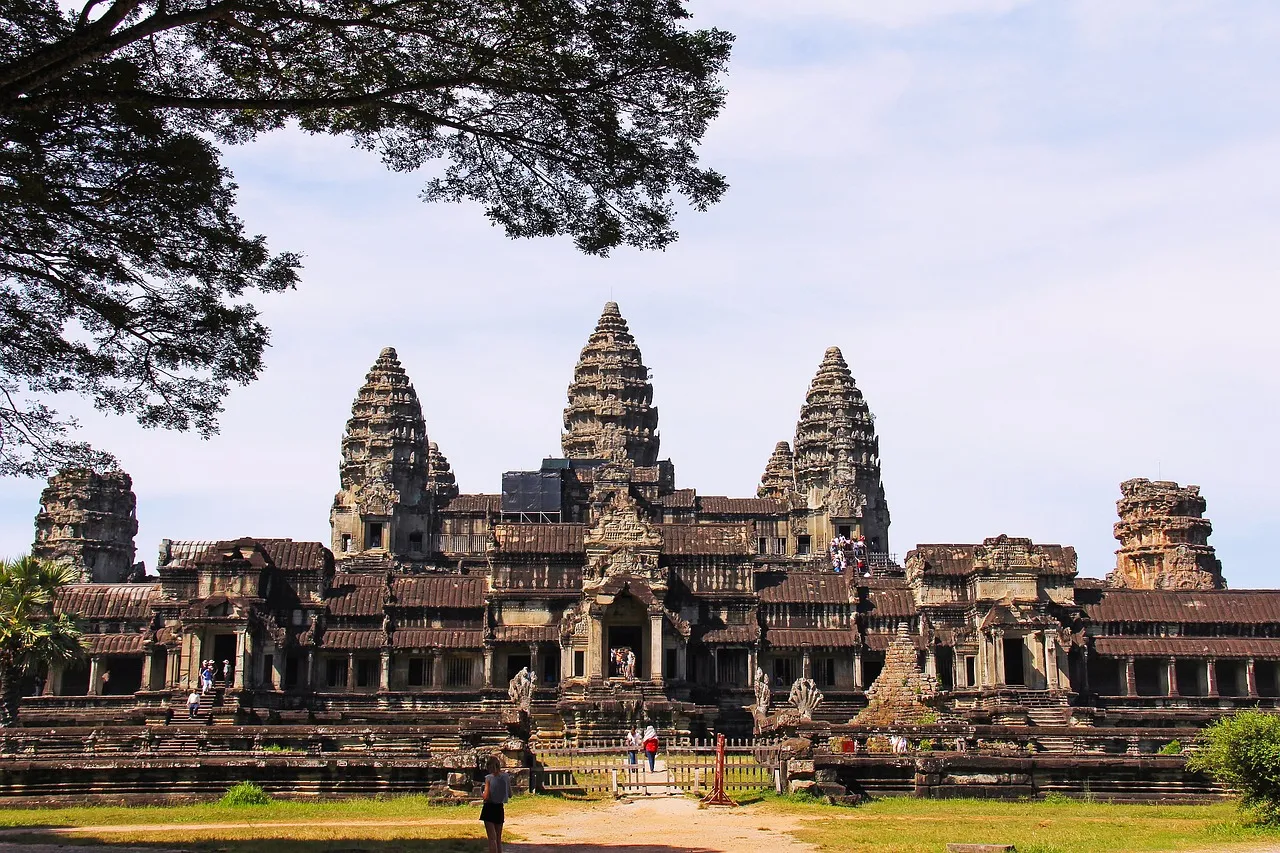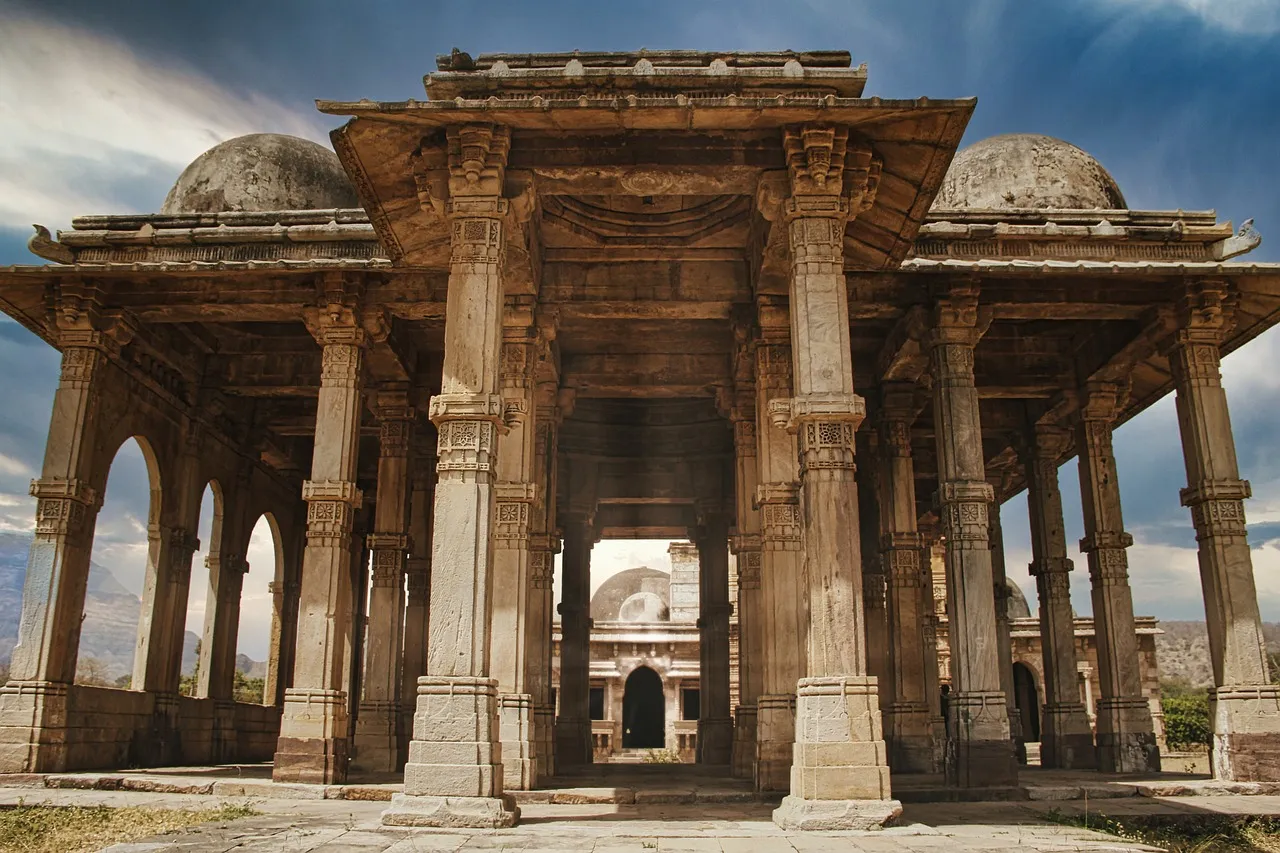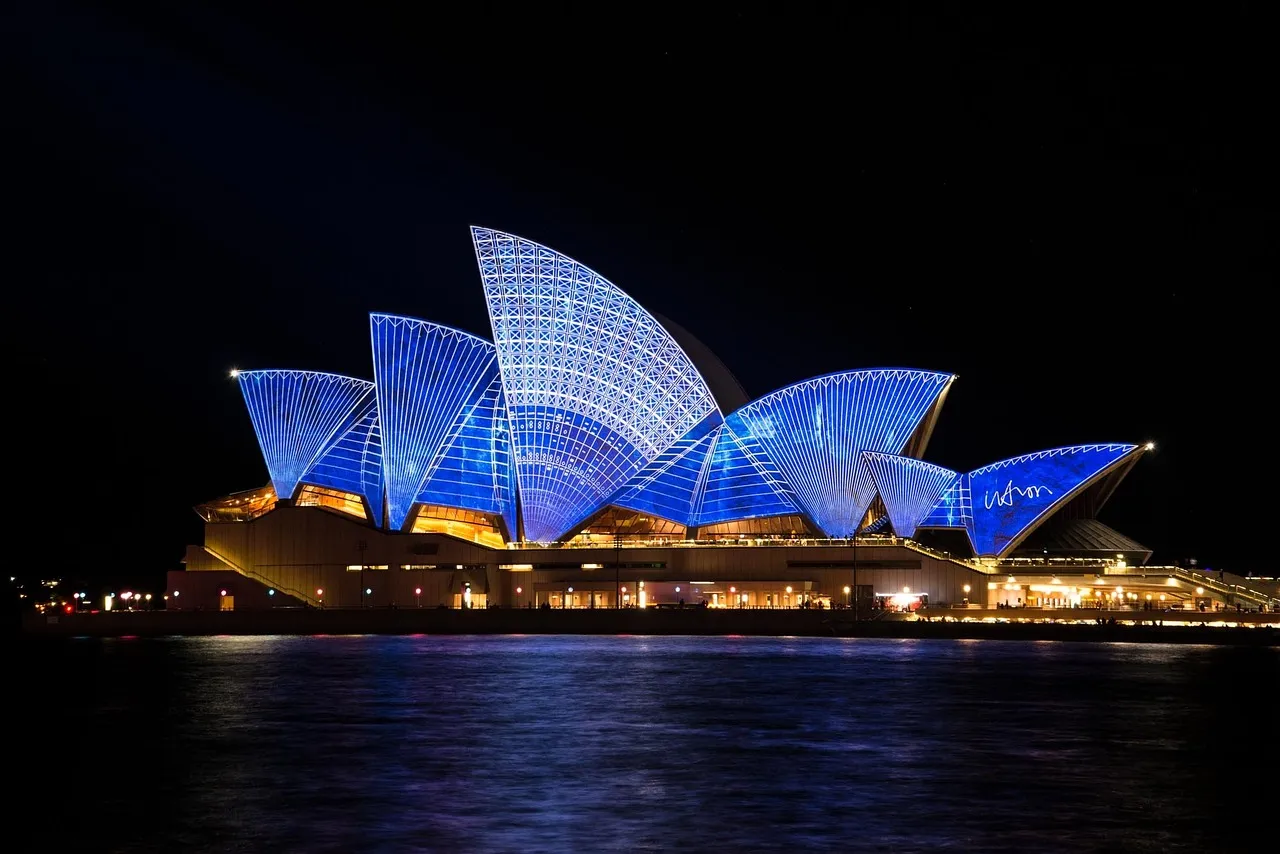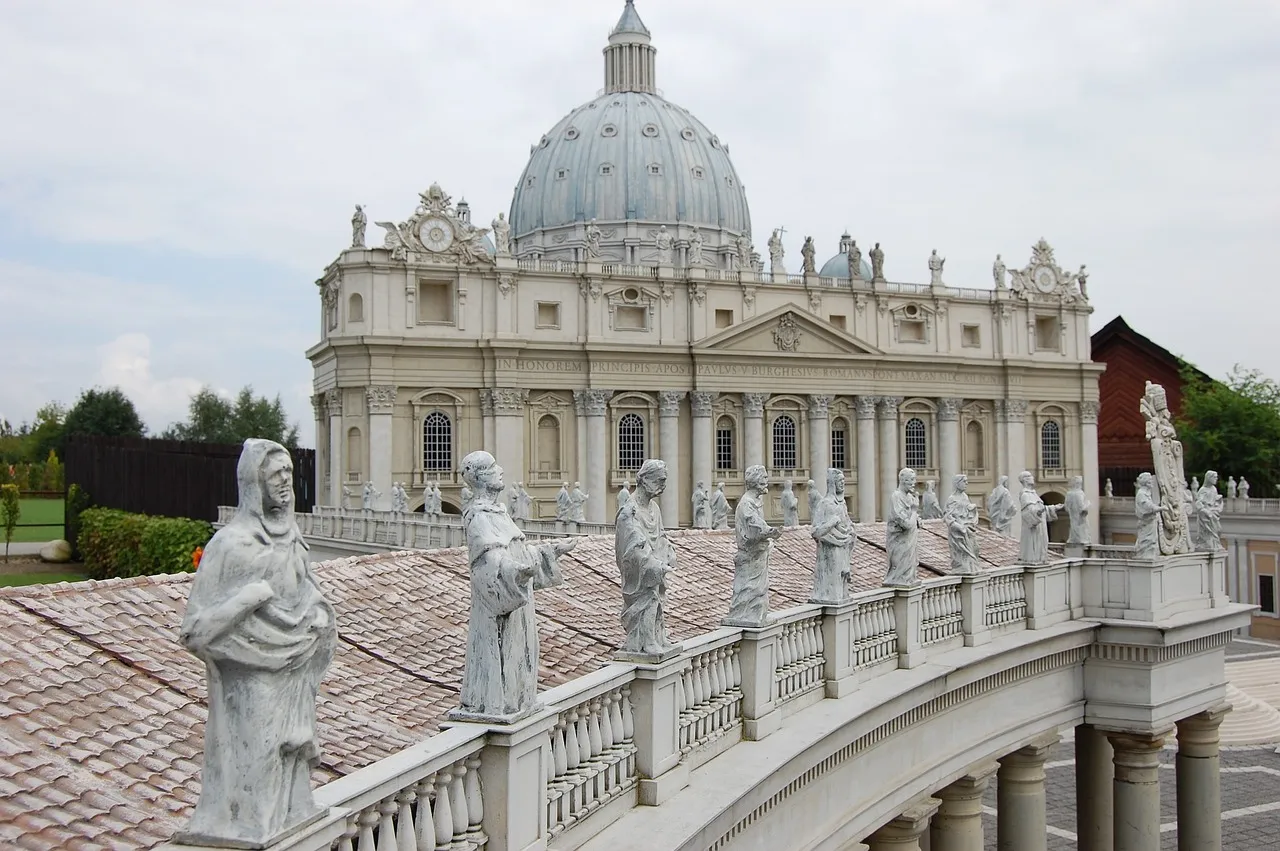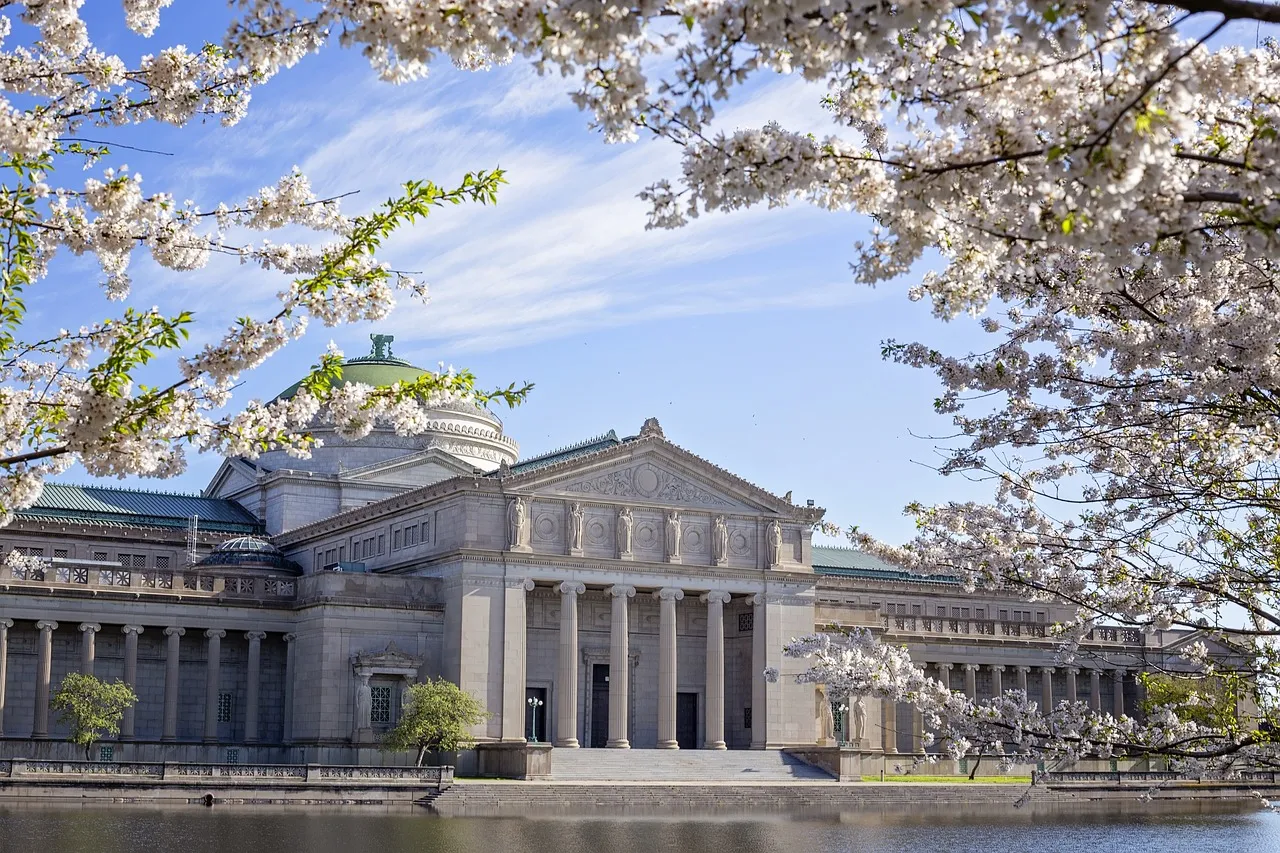Embarking on a virtual tour of the world’s architectural wonders is like stepping into a gallery of human ingenuity and creativity. Each structure narrates a story of its time, culture, and the brilliance of the architects who envisioned and brought it to life. Join us as we traverse continents and centuries to explore some of the most awe-inspiring architectural marvels that stand as testaments to human achievement.
Architectural Wonders Globally
1. The Great Wall of China: A Symbol of Ancient Engineering Mastery
The Great Wall of China, stretching over 13,000 miles, is an unparalleled testament to ancient engineering prowess. Built to protect against invasions, this UNESCO World Heritage Site winds through diverse landscapes, showcasing strategic military architecture, watchtowers, and fortifications. As visitors traverse its monumental length, they become part of a living narrative that spans centuries.
2. Machu Picchu: Incan Elegance Amidst Andean Peaks
Nestled high in the Andes Mountains, Machu Picchu is an architectural gem that whispers tales of Incan civilization. This ancient city, built in the 15th century and later abandoned, unfolds a mystery that captivates modern explorers. With its precisely cut stones, agricultural terraces, and intricate urban planning, Machu Picchu remains a symbol of Incan sophistication and architectural brilliance.
3. Taj Mahal: The Epitome of Mughal Grandeur
A symbol of undying love, the Taj Mahal in Agra, India, stands as a testament to Mughal architecture’s splendor. Commissioned by Emperor Shah Jahan in memory of his beloved wife Mumtaz Mahal, this white marble mausoleum enchants with its symmetrical gardens, intricate calligraphy, and the ethereal beauty of its reflective pool. The Taj Mahal’s design seamlessly blends Persian, Islamic, and Indian architectural styles.
4. The Colosseum: A Roman Amphitheater of Grandeur
In the heart of Rome, the Colosseum stands as an enduring symbol of ancient Roman engineering and entertainment. Completed in AD 80, this colossal amphitheater could host up to 80,000 spectators, showcasing gladiatorial contests and public spectacles. The Colosseum’s elliptical shape, tiered seating, and intricate subterranean systems exemplify the architectural genius that defined the Roman Empire.
5. Petra: The Rose-Red City Carved in Stone
Nestled in the desert of Jordan, Petra emerges as a stunning testament to Nabatean architecture. Carved into rose-red cliffs, this ancient city unveils a captivating blend of Hellenistic and Middle Eastern influences. The intricate facades of Al-Khazneh and the Monastery, coupled with a sophisticated water management system, showcase the mastery of the Nabateans in creating a city that defied its harsh desert surroundings.
6. The Pyramids of Giza: Enduring Mysteries of Ancient Egypt
The Pyramids of Giza, standing as guardians on the outskirts of Cairo, continue to awe and mystify. Built over 4,500 years ago, these colossal structures—Cheops, Chephren, and Mycerinus—serve as eternal resting places for pharaohs. The precision of their construction, alignment with celestial bodies, and the sheer scale of the pyramids underscore the ancient Egyptians’ advanced understanding of architecture and engineering.
7. The Sydney Opera House: A Modern Icon of Architectural Innovation
In the heart of Australia, the Sydney Opera House emerges as a beacon of modern architectural innovation. Designed by Jørn Utzon and inaugurated in 1973, its iconic shell-like structures redefine the city’s skyline. The Sydney Opera House not only hosts world-class performances but also stands as a symbol of architectural audacity and imagination.
8. Angkor Wat: Khmer Majesty in Cambodian Jungles
Hidden within the jungles of Cambodia, Angkor Wat reigns as the largest religious monument globally and a testament to Khmer architecture. Originally a Hindu temple dedicated to Vishnu, it later transformed into a Buddhist shrine. The intricate bas-reliefs depicting Hindu epics, expansive courtyards, and the towering central spire showcase the Khmer Empire’s artistic and architectural brilliance.
9. The Parthenon: Classical Greek Harmony in Athens
Perched atop the Acropolis in Athens, the Parthenon stands as the embodiment of classical Greek architecture. Constructed in the 5th century BC, this Doric temple dedicated to the goddess Athena boasts perfect proportions, fluted columns, and intricate friezes. Despite the ravages of time, the Parthenon endures as a symbol of ancient Greek democracy and cultural achievements.
10. Burj Khalifa: Touching the Skies in Modern Dubai
In the heart of Dubai, the Burj Khalifa pierces the sky, standing as a testament to contemporary architectural ambition. Soaring at over 828 meters, it is the world’s tallest building. The Burj Khalifa’s sleek design, cutting-edge engineering, and panoramic views from its observation decks redefine the possibilities of modern skyscraper architecture.
These architectural wonders, scattered across continents and epochs, form a rich tapestry that reflects humanity’s ceaseless pursuit of innovation and artistic expression. From ancient wonders like the Great Wall and Machu Picchu to modern marvels like the Sydney Opera House and Burj Khalifa, each structure tells a unique story, inviting us to marvel at the ingenuity that defines our shared human heritage. As we traverse these architectural landscapes, we witness the enduring legacy of civilizations, the evolution of design philosophies, and the everlasting pursuit of reaching new heights—both literal and metaphorical.
Famous architectural landmarks
Architectural landmarks stand as timeless witnesses to human innovation, culture, and the pursuit of monumental beauty. Each structure carries with it a narrative, reflecting the aspirations and triumphs of the societies that conceived them. Join us on a journey around the world as we unravel the stories behind some of the most famous architectural landmarks that have captured the imagination of generations.
1. Eiffel Tower: Parisian Elegance on the Seine
The Eiffel Tower, an enduring symbol of romance and sophistication, graces the Parisian skyline with its lattice of iron intricacies. Constructed for the 1889 World Exposition, it was initially met with skepticism but has since become an iconic representation of French ingenuity. With breathtaking panoramic views from its observation decks, the Eiffel Tower invites visitors to witness the city of love in all its splendor.
2. Statue of Liberty: America’s Beacon of Freedom
Standing proudly in New York Harbor, the Statue of Liberty extends a welcoming embrace to all who approach America’s shores. A gift from France in 1886, this colossal copper figure represents freedom and democracy. Lady Liberty’s torch illuminates the night, symbolizing hope and enlightenment for millions of immigrants who sought a new beginning in the United States.
3. The Sydney Opera House: A Sailing Symphony in Australia
Perched on the shores of Sydney Harbour, the Sydney Opera House is a modern architectural marvel that has become synonymous with Australia’s cultural vibrancy. Designed by Jørn Utzon and opened in 1973, its shell-like structures echo the sails of a yacht, creating a harmonious blend of form and function. The Sydney Opera House hosts world-class performances and is a testament to the power of architectural innovation.
4. The Great Wall of China: Ancient Defender of the East
Winding its way through the picturesque landscapes of China, the Great Wall stands as a testament to ancient engineering prowess. Built over several dynasties to protect against invasions, this colossal structure stretches over 13,000 miles. The Great Wall invites visitors to traverse its historic paths, offering breathtaking views and insights into China’s rich cultural heritage.
5. The Colosseum: Rome’s Grand Amphitheater
In the heart of Rome, the Colosseum stands as a majestic symbol of ancient Roman entertainment. Completed in AD 80, this colossal amphitheater could host up to 80,000 spectators, showcasing gladiatorial contests and public spectacles. The Colosseum’s elliptical shape, tiered seating, and intricate subterranean systems exemplify the architectural genius that defined the Roman Empire.
6. Machu Picchu: Incan Splendor Amidst Andean Peaks
High in the Andes Mountains of Peru, Machu Picchu unveils the breathtaking beauty of Incan architecture. Built in the 15th century and later abandoned, this ancient city showcases precise stone constructions, agricultural terraces, and intricate urban planning. Machu Picchu’s mystical ambiance and stunning vistas make it a pilgrimage site for modern explorers.
7. The Burj Khalifa: Touching the Skies in Dubai
Dwarfing the Dubai skyline, the Burj Khalifa is a testament to contemporary architectural ambition. Soaring at over 828 meters, it stands as the world’s tallest building. The Burj Khalifa’s sleek design, cutting-edge engineering, and panoramic views from its observation decks redefine the possibilities of modern skyscraper architecture, symbolizing Dubai’s meteoric rise.
8. The Acropolis: Athens’ Enduring Symbol of Democracy
Perched atop Athens, the Acropolis stands as a symbol of ancient Greek democracy and architectural brilliance. The Parthenon, a Doric temple dedicated to the goddess Athena, showcases perfect proportions, fluted columns, and intricate friezes. Despite the ravages of time, the Acropolis endures as a testament to ancient Greek cultural achievements.
9. Petra: The Rose-Red City Carved in Stone
Nestled in the Jordanian desert, Petra emerges as a stunning testament to Nabatean architecture. Carved into rose-red cliffs, this ancient city unveils a captivating blend of Hellenistic and Middle Eastern influences. The intricate facades of Al-Khazneh and the Monastery showcase the mastery of the Nabateans in creating a city that defied its harsh desert surroundings.
10. The Taj Mahal: A Mughal Masterpiece in Agra
A symbol of undying love, the Taj Mahal in Agra, India, stands as a testament to Mughal architecture’s splendor. Commissioned by Emperor Shah Jahan in memory of his beloved wife Mumtaz Mahal, this white marble mausoleum enchants with its symmetrical gardens, intricate calligraphy, and the ethereal beauty of its reflective pool.
Famous architectural landmarks are more than just physical structures; they are narratives etched in stone, telling tales of human endeavor, creativity, and cultural identity. From the Eiffel Tower’s timeless elegance to the ancient majesty of Machu Picchu, these landmarks are not just monuments; they are living testaments to the evolution of civilizations and the enduring power of visionary design. As we traverse the globe through these iconic silhouettes, we are reminded of the universal language spoken by these architectural marvels—an eloquent poetry that transcends time and resonates with the hearts of those who encounter them.
Architectural photography tips
Architectural photography is a captivating art form that allows photographers to immortalize the intricate details and grandeur of structures, both ancient and modern. Whether you’re capturing the timeless elegance of historic landmarks or the sleek lines of contemporary buildings, mastering architectural photography requires a keen eye, technical skills, and a deep appreciation for design. In this guide, we’ll explore essential tips to help aspiring lens masters elevate their architectural photography to new heights.
1. Understand Your Gear: Mastering the Basics
Before embarking on an architectural photography journey, it’s crucial to understand your camera equipment. Familiarize yourself with the settings and features of your camera, such as aperture, shutter speed, and ISO. A sturdy tripod is a must-have for capturing long exposures and ensuring sharp images, especially in low-light conditions.
2. Choose the Right Time: Golden Hours and Blue Hours
Timing is everything in architectural photography. The golden hours—shortly after sunrise and before sunset—provide warm, soft lighting that enhances the beauty of structures. The blue hour, occurring just before sunrise and after sunset, offers a magical, cool-toned ambiance. Experiment with different times of day to capture diverse moods and atmospheres.
3. Composition Techniques: Framing and Leading Lines
Mastering composition is key to creating visually striking architectural photographs. Use framing elements, such as doors, windows, or natural surroundings, to draw attention to your subject. Experiment with leading lines, such as pathways or edges of buildings, to guide the viewer’s eyes through the image and highlight architectural features.
4. Pay Attention to Perspective: Capture Unique Angles
Change your perspective to capture architectural details from unique angles. Experiment with low angles to emphasize height and drama, or shoot from a higher vantage point to showcase the overall layout. Don’t hesitate to get close to capture intricate details or step back for a broader view, allowing the architecture to tell its story.
5. Mind the Distortions: Correcting Verticals and Horizontals
Architectural photography often involves dealing with perspective distortions, especially in tall buildings. Correct vertical and horizontal distortions during post-processing to ensure a natural and visually pleasing outcome. This step is crucial for maintaining the integrity of architectural elements.
6. Utilize Natural and Artificial Lighting: Finding the Balance
Understanding lighting is essential for architectural photography. While natural light during golden and blue hours is ideal, mastering the use of artificial lighting can enhance your images. Experiment with long exposures to capture cityscapes at night or use interior lighting to highlight the warmth of indoor spaces.
7. Mind Your Composition: Rule of Thirds and Symmetry
The rule of thirds is a fundamental principle in photography. Imagine breaking your frame into a grid of nine equal parts and placing key elements along these lines or at their intersections. Additionally, explore symmetry in architectural compositions, emphasizing balanced designs and creating visually impactful images.
8. Experiment with Depth of Field: Aperture Play
Adjusting your aperture allows you to control the depth of field in your images. For shots focusing on a single architectural element, use a wider aperture (lower f-stop) to create a shallow depth of field and blur the background. Conversely, for expansive cityscapes or landscapes, a narrower aperture (higher f-stop) ensures sharpness throughout the frame.
9. Post-Processing Finesse: Enhancing Your Images
Post-processing is the finishing touch to elevate your architectural photographs. Use editing tools to enhance contrast, correct color balance, and fine-tune exposure. Be mindful not to over-process; strive for a natural look that complements the inherent beauty of the architecture.
10. Continuous Learning: Stay Inspired and Evolve
Architectural photography is an evolving art form, and continuous learning is key to staying ahead. Study the works of renowned architectural photographers, attend workshops, and experiment with new techniques. Stay inspired by exploring different architectural styles and incorporating diverse perspectives into your portfolio.
Architectural photography is more than just capturing buildings; it’s about transforming structures into visual poetry that speaks to viewers on a profound level. By understanding your equipment, mastering composition techniques, and experimenting with lighting and perspectives, you can breathe life into architectural subjects. So, grab your camera, explore the urban jungle or historical landmarks, and let your lens weave stories of design, history, and beauty. With dedication and practice, you’ll evolve from an aspiring lens master to a true architectural photography maestro.
UNESCO World Heritage buildings
UNESCO World Heritage buildings stand as testaments to the ingenuity, creativity, and cultural significance of human civilizations throughout history. From ancient temples to modern masterpieces, these structures have been recognized for their outstanding universal value and are preserved to ensure they endure for future generations. Join us on a captivating journey as we explore the stories behind some of the world’s most remarkable UNESCO World Heritage buildings.
1. The Great Wall of China: Ancient Guardian of the East
The Great Wall of China, a UNESCO World Heritage site since 1987, is an architectural marvel that spans over 13,000 miles across China. Built to protect against invasions, the wall consists of various sections constructed during different dynasties. It is a symbol of ancient engineering prowess and a testament to the strategic vision of the Chinese emperors who sought to defend their empire from external threats.
2. Machu Picchu: Incan Jewel in the Andes
Perched high in the Andes Mountains of Peru, Machu Picchu is a UNESCO World Heritage site that captivates visitors with its breathtaking beauty and architectural brilliance. Built in the 15th century by the Inca emperor Pachacuti, this ancient city showcases intricate stone constructions, agricultural terraces, and urban planning. The site is a testament to the advanced engineering and cultural achievements of the Inca civilization.
3. The Taj Mahal: A Mughal Masterpiece in India
A symbol of undying love, the Taj Mahal in Agra, India, is an iconic UNESCO World Heritage building. Commissioned by Emperor Shah Jahan in memory of his beloved wife Mumtaz Mahal, the white marble mausoleum is renowned for its exquisite architectural design and meticulous craftsmanship. The Taj Mahal stands as a testament to the eternal beauty of love and the artistic achievements of the Mughal Empire.
4. The Colosseum: Rome’s Grand Amphitheater
The Colosseum, an enduring symbol of ancient Rome, is a UNESCO World Heritage site that attracts millions of visitors each year. Completed in AD 80, this colossal amphitheater could host up to 80,000 spectators and was the epicenter of gladiatorial contests and public spectacles. The Colosseum exemplifies the architectural genius that defined the Roman Empire and its contributions to entertainment and engineering.
5. The Sydney Opera House: Modern Elegance in Australia
A masterpiece of modern architecture, the Sydney Opera House in Australia has graced the shores of Sydney Harbour since its completion in 1973. Designed by Jørn Utzon, this UNESCO World Heritage building is characterized by its distinctive sail-like structures. The Sydney Opera House is not only a cultural hub hosting world-class performances but also a symbol of Australia’s architectural and artistic achievements.
6. The Acropolis: Athens’ Enduring Symbol of Democracy
Perched atop Athens, Greece, the Acropolis is a UNESCO World Heritage site that stands as a symbol of ancient Greek democracy and architectural brilliance. Dominated by the Parthenon, a Doric temple dedicated to the goddess Athena, the Acropolis showcases perfect proportions, fluted columns, and intricate friezes. Despite the passage of centuries, the Acropolis remains a testament to the cultural achievements of ancient Greece.
7. Petra: The Rose-Red City Carved in Stone
Nestled in the Jordanian desert, Petra is a UNESCO World Heritage site that unveils the captivating beauty of Nabatean architecture. Carved into rose-red cliffs, this ancient city features intricate facades, including the famous Al-Khazneh and the Monastery. Petra flourished as a major trading hub, and its well-preserved structures provide a glimpse into the architectural and cultural richness of the Nabatean civilization.
8. The Pyramids of Giza: Egypt’s Enduring Marvels
The Pyramids of Giza, a UNESCO World Heritage site, stand as eternal symbols of ancient Egyptian civilization. Built over 4,500 years ago, the pyramids were constructed as elaborate tombs for pharaohs. The Great Pyramid of Giza, in particular, is one of the Seven Wonders of the Ancient World, showcasing the advanced engineering and architectural skills of the ancient Egyptians.
9. The Alhambra: Moorish Splendor in Spain
Situated in Granada, Spain, the Alhambra is a UNESCO World Heritage site renowned for its exquisite Moorish architecture. Constructed during the mid-13th century, the palace complex features intricate geometric patterns, stunning courtyards, and serene gardens. The Alhambra stands as a testament to the cultural fusion of Moorish and Spanish influences during medieval times.
10. The Vatican City: Spiritual Center of Catholicism
While not a single building, the Vatican City is a UNESCO World Heritage site that encompasses numerous significant structures, including St. Peter’s Basilica, the Sistine Chapel, and the Vatican Museums. These architectural wonders represent the spiritual and artistic legacy of the Catholic Church, with masterpieces by Michelangelo, Raphael, and other renowned artists.
UNESCO World Heritage buildings are more than architectural marvels; they are living chapters of human history, culture, and ingenuity. These structures transcend time, inviting us to marvel at the achievements of our ancestors and appreciate the diverse cultural tapestry that defines our world. As we explore these timeless marvels, we become stewards of our collective heritage, ensuring that these extraordinary buildings endure for the enrichment and inspiration of generations to come.
Modern architectural wonders
In the 21st century, architectural innovation has reached new heights, giving rise to a breathtaking array of structures that redefine skylines and captivate the imagination. From soaring skyscrapers to eco-friendly marvels, modern architectural wonders showcase the fusion of cutting-edge technology, sustainable design, and artistic vision. Join us on a virtual journey as we explore some of the most awe-inspiring architectural wonders that have emerged in the 21st century.
1. The Burj Khalifa: Touching the Sky in Dubai
Standing tall amidst the shimmering skyline of Dubai, the Burj Khalifa is an iconic symbol of modern architecture. Completed in 2010, this megatall skyscraper holds the title of the world’s tallest building, soaring to a height of 828 meters. Designed by the renowned architect Adrian Smith, the Burj Khalifa’s sleek design, cutting-edge engineering, and innovative use of materials make it a true marvel of the modern age.
2. The Shard: London’s Glass Pyramid
Piercing the London skyline with its futuristic design, The Shard is a testament to modern architectural innovation. Completed in 2012, this glass-clad skyscraper stands at 310 meters, making it the tallest building in the United Kingdom. Renowned architect Renzo Piano’s vision for The Shard was to create a dynamic and multifunctional space, housing offices, a hotel, restaurants, and a viewing gallery offering panoramic views of London.
3. The One World Trade Center: Rebuilding Ground Zero
Arising from the ashes of Ground Zero, the One World Trade Center, or Freedom Tower, stands as a resilient symbol of hope and strength. Completed in 2014, this skyscraper reaches a symbolic height of 1,776 feet, commemorating the year of American independence. Designed by architect David Childs, the One World Trade Center blends modern aesthetics with a profound sense of remembrance, housing offices, an observation deck, and a poignant memorial.
4. The Beijing National Stadium: The Bird’s Nest
The Beijing National Stadium, affectionately known as the Bird’s Nest, is a modern architectural wonder that hosted the 2008 Summer Olympics. Designed by Herzog & de Meuron in collaboration with Chinese artist Ai Weiwei, the stadium’s intricate lattice-like structure resembles a bird’s nest, symbolizing unity and harmony. The innovative design showcases a fusion of artistic expression and engineering excellence.
5. The Bosco Verticale: Vertical Forests in Milan
Embracing the concept of sustainable living, the Bosco Verticale, or Vertical Forest, in Milan is a revolutionary architectural project designed by Stefano Boeri Architects. Completed in 2014, these twin residential towers are adorned with thousands of trees and plants, creating a vertical forest that contributes to biodiversity, reduces pollution, and provides a breath of fresh air in the heart of the city.
6. The Guangzhou Opera House: A Fluid Symphony in China
Designed by the late architect Zaha Hadid, the Guangzhou Opera House in China is a striking example of contemporary architecture that defies traditional norms. Completed in 2010, the building’s flowing and organic form seamlessly integrates with the surrounding landscape, creating a visual spectacle that mirrors the fluidity of music and performing arts.
7. The Eden Project: A Biome Extravaganza in Cornwall
Nestled in the picturesque landscape of Cornwall, England, the Eden Project is a remarkable architectural and ecological marvel. Conceived by Sir Tim Smit and designed by Sir Nicholas Grimshaw, the project features a series of massive biomes housing diverse ecosystems, including rainforests and Mediterranean landscapes. Completed in 2001, the Eden Project serves as an educational hub, promoting environmental awareness and sustainability.
8. The Lotte World Tower: Seoul’s Skyscraper Jewel
Piercing the Seoul skyline, the Lotte World Tower is a beacon of modernity and sophistication. Completed in 2017, this supertall skyscraper reaches a height of 555 meters, making it the tallest building in South Korea. The tower’s sleek design, inspired by traditional Korean ceramics, and its integration of cutting-edge technology showcase the country’s commitment to modern architectural excellence.
9. The Louvre Abu Dhabi: A Cultural Oasis in the Desert
The Louvre Abu Dhabi, an architectural gem in the United Arab Emirates, seamlessly blends tradition and modernity. Designed by architect Jean Nouvel, the museum, opened in 2017, features a stunning dome structure that filters sunlight to create a “rain of light” effect. This cultural oasis showcases an extensive collection of art and artifacts, bridging the gap between East and West.
10. The Shard of Glass: A Vertical City in London
Reimagining urban living, The Shard of Glass, or simply The Shard, is not only an iconic skyscraper but a vertical city in its own right. Designed by Renzo Piano and completed in 2012, The Shard houses offices, restaurants, a hotel, and residential spaces within its gleaming glass façade. Its dynamic design and multifunctional use epitomize the evolution of modern architecture in urban landscapes.
As we traverse through the 21st century, modern architectural wonders continue to redefine our skylines and shape the way we experience the built environment. From sustainable vertical forests to soaring skyscrapers that touch the heavens, these structures are a testament to human ingenuity, technological advancement, and a relentless pursuit of pushing the boundaries of what is possible. The architectural wonders of the 21st century weave a tapestry of innovation and vision, inviting us to marvel at the extraordinary possibilities that lie ahead.
Architectural history of different cultures
Architecture is a mirror reflecting the essence of a society, capturing its history, values, and cultural identity. Each civilization leaves an indelible mark on the world through its unique architectural expressions. Join us on a captivating journey through time and space as we delve into the architectural history of different cultures, discovering the stories told by their monuments, palaces, and temples.
1. Mesopotamian Marvels: The Cradle of Civilization
The Mesopotamian region, often referred to as the cradle of civilization, boasts an architectural legacy that laid the foundation for many subsequent cultures. The ziggurats of ancient Sumeria, such as the iconic Ziggurat of Ur, stand as towering testimonies to Mesopotamian ingenuity. These stepped pyramids served as temples, connecting earth to the heavens and symbolizing the Mesopotamian people’s spiritual beliefs.
2. Egyptian Grandeur: Pyramids and Temples Along the Nile
In the arid landscapes along the Nile, the ancient Egyptians erected monumental structures that continue to awe and inspire. The pyramids of Giza, including the Great Pyramid of Khufu, are architectural marvels that showcase the Egyptians’ advanced engineering skills and deep-rooted beliefs in the afterlife. The temples of Luxor and Karnak stand as timeless tributes to the pharaohs and their gods.
3. Greek Perfection: Harmony and Proportion in Ancient Greece
Ancient Greece gifted the world with architectural principles that remain influential to this day. The Parthenon, atop the Acropolis in Athens, is a pinnacle of classical Greek architecture. Designed by the architects Iktinos and Kallikrates, the Parthenon embodies harmony, proportion, and a dedication to the goddess Athena. Greek columns, such as Doric, Ionic, and Corinthian, became integral elements in subsequent architectural styles.
4. Roman Engineering Mastery: Triumphal Arches and Aqueducts
The Romans elevated architecture to unprecedented heights, emphasizing grandeur and engineering prowess. The Colosseum, an amphitheater designed for gladiatorial contests, and the Pantheon, a temple dedicated to the Roman gods, stand as enduring symbols of Roman innovation. The triumphal arches, like the Arch of Constantine, commemorate military victories and showcase intricate sculptures and reliefs.
5. Islamic Splendors: Mosques, Palaces, and Mosaics
Islamic architecture is a fusion of artistic expression and spiritual devotion. The Alhambra in Granada, Spain, is a masterpiece of Islamic architecture, featuring intricate geometric patterns, horseshoe arches, and lush gardens. The Great Mosque of Cordoba, with its horseshoe arches and intricate mosaics, exemplifies the beauty and complexity of Islamic design, celebrating both faith and aesthetics.
6. Asian Elegance: Pagodas, Temples, and Gardens
In Asia, diverse cultures have left an indelible imprint on architectural landscapes. The Forbidden City in Beijing, China, is a sprawling complex of palaces and gardens that served as the imperial palace for centuries. Japan’s Himeji Castle, a UNESCO World Heritage site, is a mesmerizing example of traditional Japanese architecture with its white exterior and intricate wooden framework.
7. Maya Mystique: Temples in the Jungle
The ancient Maya civilization of Mesoamerica created architectural wonders nestled in dense jungles. Tikal, in present-day Guatemala, is a sprawling archaeological site featuring towering pyramids such as Temple I and the Great Jaguar Temple. These structures, built for religious ceremonies, showcase the Maya’s advanced understanding of astronomy and mathematics.
8. Gothic Grandeur: Cathedrals and Castles in Medieval Europe
Medieval Europe witnessed the rise of Gothic architecture, characterized by soaring cathedrals and formidable castles. Chartres Cathedral in France is a prime example, with its pointed arches, ribbed vaults, and towering spires. Castles like Neuschwanstein in Germany and Windsor Castle in England reflect the defensive architecture of the time, blending functionality with aesthetic appeal.
9. Renaissance Rebirth: Art and Architecture in Italy
The Renaissance in Italy marked a rebirth of classical ideals and artistic expression. Florence’s Cathedral, Santa Maria del Fiore, showcases the brilliance of Brunelleschi’s dome, a feat of engineering. The architectural designs of the time, seen in the works of Leonardo da Vinci and Michelangelo, exemplify a harmonious blend of art, science, and humanism.
10. Modern Marvels: Skyscrapers, Bridges, and Beyond
The 19th and 20th centuries ushered in an era of architectural innovation and technological advancements. The Eiffel Tower in Paris, designed by Gustave Eiffel, symbolizes the structural possibilities of iron. Frank Lloyd Wright’s Fallingwater in Pennsylvania redefines the relationship between architecture and nature. The Sydney Opera House, designed by Jørn Utzon, stands as an iconic symbol of modern design and engineering.
The architectural history of different cultures forms a rich tapestry, woven with the threads of innovation, cultural identity, and human aspiration. From the ancient wonders of Mesopotamia and Egypt to the Gothic cathedrals of Europe and the modern marvels of the 21st century, each culture has contributed to the global heritage of architecture. Exploring these architectural wonders is not merely a journey through time but an immersion into the soul of civilizations past and present.
